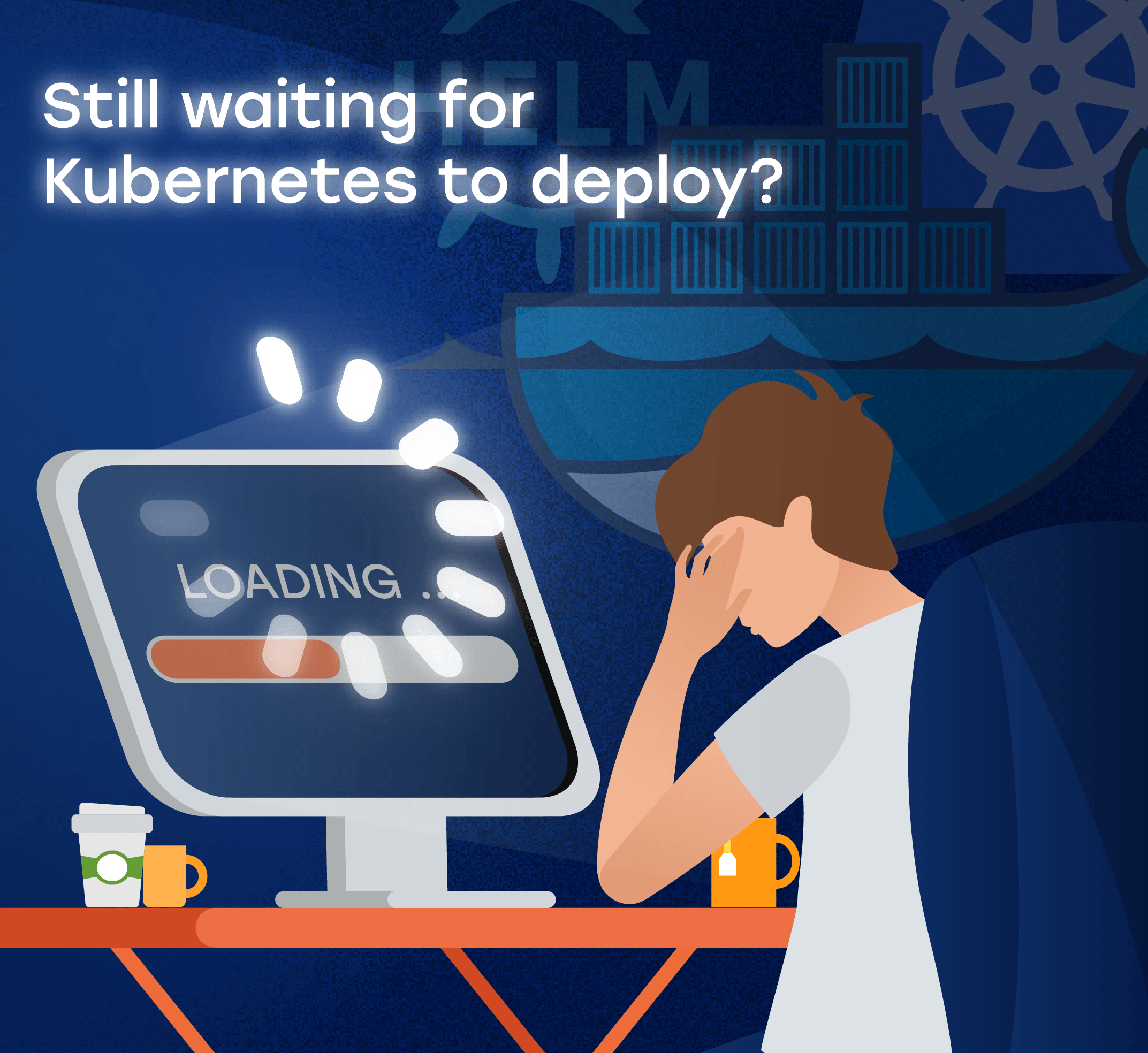What Do We Offer?

Managed Site Reliability Engineering from IT Svit
SRE is an approach to cloud infrastructure management and software development that automates the environment management following the principles the developers use when building the code. This means that infrastructure settings are described in textual files, which are stored and versioned on GitHub, embodying the Infrastructure as Code principle of DevOps.
Instant access to high-grade SRE expertise
MSPs like IT Svit deal with projects of all sizes, and their SRE specialists know all the nooks and crannies of the projects of any scale. This knowledge helps design and implement cost-efficient and performant cloud infrastructure, which begins to work for you from day one.
High-availability best practices
Your product or service and its underlying infrastructure will be optimized to be able to respond adequately, timely and cost-effectively to changes in demand. IT Svit ensures high availability of your products and services to improve the end-user experience of your customers!
Proactive bottleneck removal
There are certain operational or structural bottlenecks whose existence can often not be foreseen and is usually discovered through costly errors. Hiring an SRE domain expert from an MSP ensures such bottlenecks are identified and removed at once.
Boost site reliability today
Enhance your website’s reliability with our SRE services. From proactive monitoring to rapid incident response, we keep your site running smoothly. Reach out now for reliable solutions.
Parts of SRE engineering services

Assessment of the existing infrastructure and automation practices in place
Whether you want your existing software engineer to design new automated workflows for your software development, or decide to hire external resources for the job, the first step is to evaluate the systems, tools, and workflows in place. This is done in close collaboration with the development team, software engineers and business stakeholders in your company. This stage results in a graphical representation of the system and workflows your business currently uses.
Identification of performance bottlenecks and structural shortcomings
After the scheme of system infrastructure and workflows is complete, it helps identify all the bad structural decisions and performance bottlenecks. Later, the SRE specialist can offer the solutions for these bottlenecks and suggest ways to improve the system performance.
Design and implementation of solutions for said bottlenecks
Once the structural flaws and performance bottlenecks are identified, the SRE specialist can design and implement the ways to rectify them. This loop of assessment and improvement should be continuous, yet even the first couple of cycles can help get rid of various issues that hamper the growth and stable performance of your products.
Configuration of CI/CD pipelines to automate code delivery for new features
The process of delivering new features to the customers should be as smooth and effortless as possible. SRE specialist must closely collaborate with the development team to define the chain of tools and actions required to commit, build, test the new code and push into production environments. These tools must then be configured to provide a continuous automated pipeline of actions, so the developers will not have to wait for an approve of every code commit, which will be especially useful for large-scale deployments in long-term projects.
Building the CD workflows for automating infrastructure management in production
“Don’t fix it if it works” is the mantra that hampers the improvement of innumerable infrastructures in companies, where the system administrators don’t risk to try to experiment out of fear of making things worse. Quite the contrary, implementing the CD workflows in your infrastructure management processes always involves a certain error budget, but end up resulting in huge cost savings and speeding up the process of product development and operations.
Enabling automated system monitoring, issue alerting and logs processing
The most time-consuming and laborious part of infrastructure management is monitoring the production environment and fixing the repetitive issues that arise in production. SREs should have ample expertise at configuring the cloud monitoring solutions in order to enable automatic logging, alerting and data analytics for machine-generated data from your systems. This helps configure self-healing cloud infrastructures that are easy to manage and recover even after major failures. Most importantly, automating the routine helps dedicate more time to system improvement and lower the risk of major failures practically to zero.
Thus said, IT Svit is always ready to lend a hand and provide Site Reliability Engineering services for your business!
FAQ
Why would a business require SRE services and why would searching for them at MSPs yield the best results?
A site reliability engineer is a person that deeply understands all the peculiarities and complications of software development and operations. This knowledge ensures the SRE engineers understand what tools are required throughout the software development process, on what stages they have to be activated, and how to turn the output of each stage into the input on the next stage. Thus said, the site reliability engineer concentrates on preparing the scenarios for all kinds of operations and codifying the sequences of actions in these scenarios in such a way as to minimize the time and effort required to pass the code from a new commit into a production environment.
The other aspect of SRE services is centered at ensuring stable and uninterrupted performance of your apps in production environments. This includes configuring the features like:
- Load balancing
- Auto-scaling groups
- Database replicas
- Self-governing Kubernetes clusters
- Docker containers
- Automatic backups and restoration using Terraform, etc.
Thus said, tasking an SRE engineer to design CI/CD processes is a guarantee of reorganizing your business workflows and infrastructure to form a consistent, reliable and predictable software development and operations pipeline. The question is, where to get such an SRE engineer?
Why MSP is the best choice for hiring a Site Reliability Engineer?
When a business decides to gain access to the site reliability engineering services, there are but 3 ways to follow: training a talent in-house, hiring a new team member, or outsourcing the task to a third-party Managed Services Provider. There are benefits and drawbacks for each of these approaches.
- Training an SRE engineer in-house. As the SRE can be loosely defined as applying the software development methods to infrastructure management, an SRE engineer can be trained from any system administrator available in your team. This training will take lots of time and will include learning lots of techniques enabling building the CI/CD pipelines for your software development and infrastructure management — but it is well worth the investment.
- Hiring a new team member. A business can opt for hiring a ready SRE specialist to provide instant access to the required expertise, but this approach holds all the dangers of any other recruiting process. It requires time and the talent you might end up with might not be the perfect fit for the needs of your project, so the time and money expenses can still be pretty excessive and add risks for your business.
- Contacting an MSP to hire an SRE from them. Managed Services Providers are hubs of IT outsourcing expertise, housing skilled DevOps engineers and SRE specialists with an in-depth understanding of common issues and best solutions for them. These specialists have done the process of CI/CD pipeline configuration and SRE implementation multiple times for various startups. This way you will get instant access to skilled specialists that will have all the skills you need and will begin working on your project at once.
Why are the best SRE talents working at Managed Services Providers like IT Svit? Because of the diversity of tasks they face! When working for one company for years, the site reliability engineers have to endlessly improve the same old products and systems, which decreases their productivity and creativity. Quite the contrary, when working for an MSP, an SRE talent faces new challenges quite often, solves them before he gets bored — and there are always new projects coming on! In addition, the startups are more prone to using the latest tech, instead of dealing with legacy systems and modules.
Thus said, working for a Managed Services Provider allows SRE services specialists to gain lots of experience using the latest versions of popular DevOps tools, helps the startups optimize their cloud infrastructure and workflows and presents a win-win situation for both parties. The SRE talents get their training and master the latest tech in the process, while the businesses get future-proof workflows and systems at their disposal.

Dmytro Medvediev
CTO & Cloud Architect




